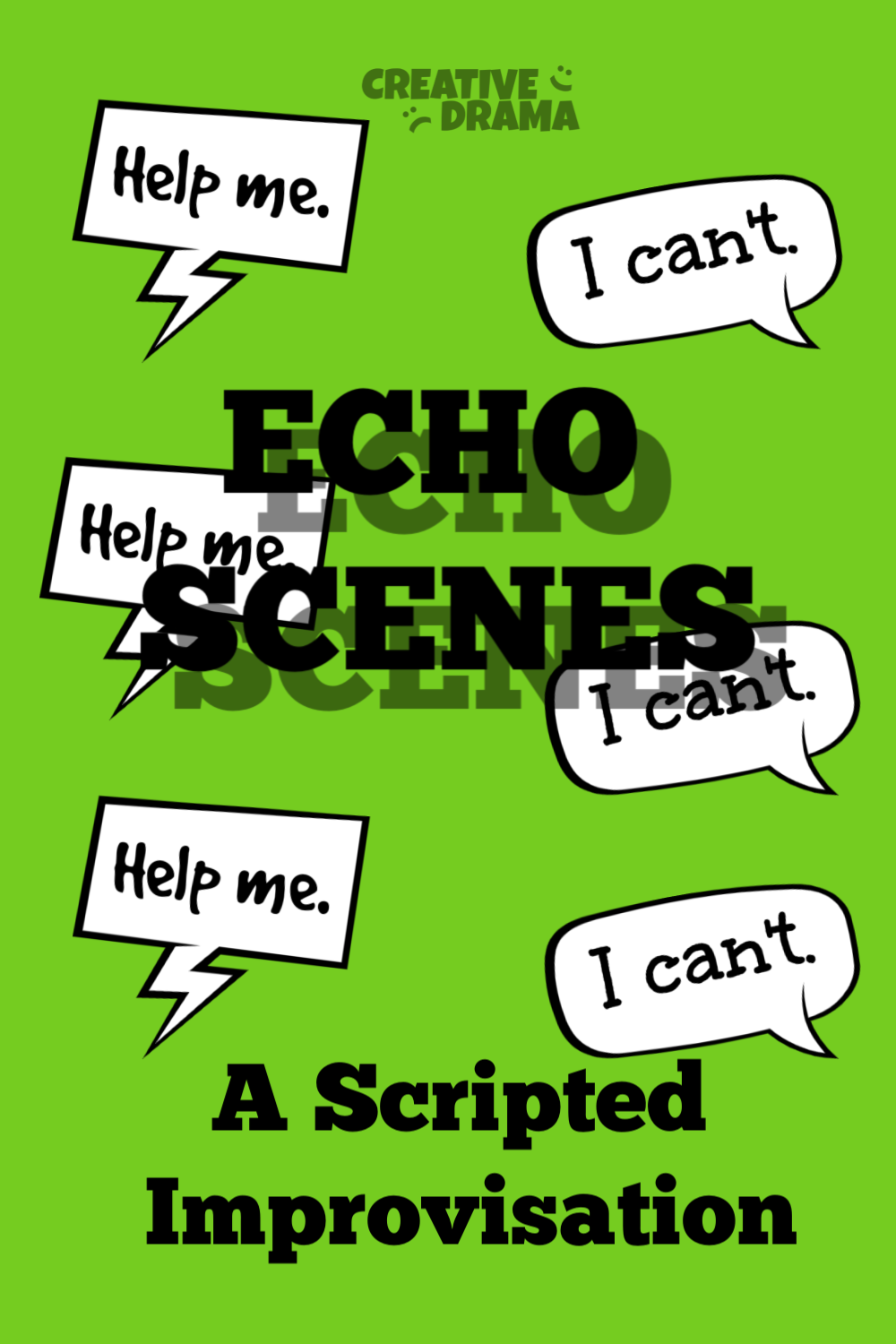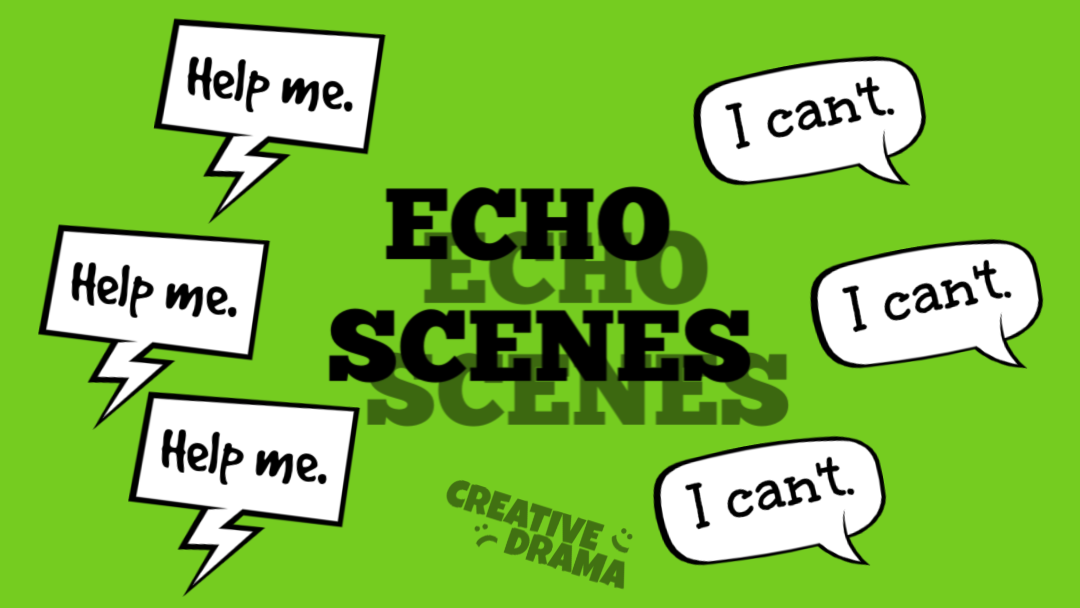In pairs, actors will create a coherent and cohesive scene using only a pair of lines. The actors must decide on their characters, the location, the situation, their motivations, and play the scene to a logical conclusion.
Game Type: Skills Development
Age Range: 8+ (as long as they’ve had some theatre experience, 8-10-year-olds should be able to participate)
Number of Participants: In pairs; part of the exercise is a presentation, so think about how long the sharing will take and for how long your participants can “audience.”
Materials: Printouts of the scenes; they could be written on a board for “free choice” as well
Explanation: The participants pair up and recieve a pair of lines. They must devise a scene in which the lines repeat. Pairs rehearse for a short period, then present their “Echo Scene” to the rest of the group.
Directions:
- Students pair up, or the leader pairs them up.
- Each pair receives ONE of the following scenes:
One
A: Help me.
B: I can’t.
Two
A: I’m sorry.
B: It’s all your fault.
Three
A: Stop it.
B: Make me.
Four
A: What are you doing?
B: What does it look like?
Five
A: It’s time to go.
B: Not yet.
Six
A: I need you.
B: Just a minute.
The two lines in each scene are the ONLY lines actors can say. They repeat the lines in order.
3. Each pair should decide who the characters are and what situation they are in; i.e. for scene one, character A is stuck underneath a fallen tree, and character B is not strong enough to lift the tree.
4. Prompt the actors to consider the following:
- How many times the lines will repeat (at least 3)
- What motivation(s) are happening for each character
- How to create an arc for the scene – beginning, middle, and end – that develops emotionally for the characters
- What is the subtext – the characters are saying the same words, but what do they really mean?
5. Give actors 5-10 minutes to plan, then get the scenes up on their feet!
6. Audience members should observe closely – see “Reflection” below.
REFLECTION/ANALYSIS: Have the participants jot down their impressions of the scenes – what “givens” can they surmise from the actors’ performances? Discussing after all the groups have presented is probably the most time-efficient method.
VARIATIONS: Have the pairs try their scene with the lines reversed – keeping the same circumstances – how does it change the momentum of the scene?










